The popular Madmen TV show accurately portrayed the lifestyles of corporate America in the 1950s and 1960s – everyone smoked and drank alcoholic beverages.
In the 1950s, the generation that grew up in the Great Depression and fought World War Two, were tough, they worked hard, and partied hard. Drinking was common at most social functions and people were expected to be able to hold their alcohol. The Fifties and early Sixties was an era where people looked up to legendary drinkers like Humphrey Bogart’s Holmby Hills Rat Pack, Frank Sinatra’s Rat Pack, and Sean Connery as James Bond. The television series the Mad Men captured the mood and atmosphere in detail.
Social drinking was the norm in the Fifties. Drinking with friends and neighbors at home was at an all-time high. Homemakers relished in showing off their home décor, cooking skills, and fashion by hosting cocktail parties. Parties gave married couples activities to do together. According to Antiques & The Arts magazine: “the suburban cocktail party epitomized the nuclear family as the essential setting for all social interactions.” Neighbors bonded like at no other time before or since.
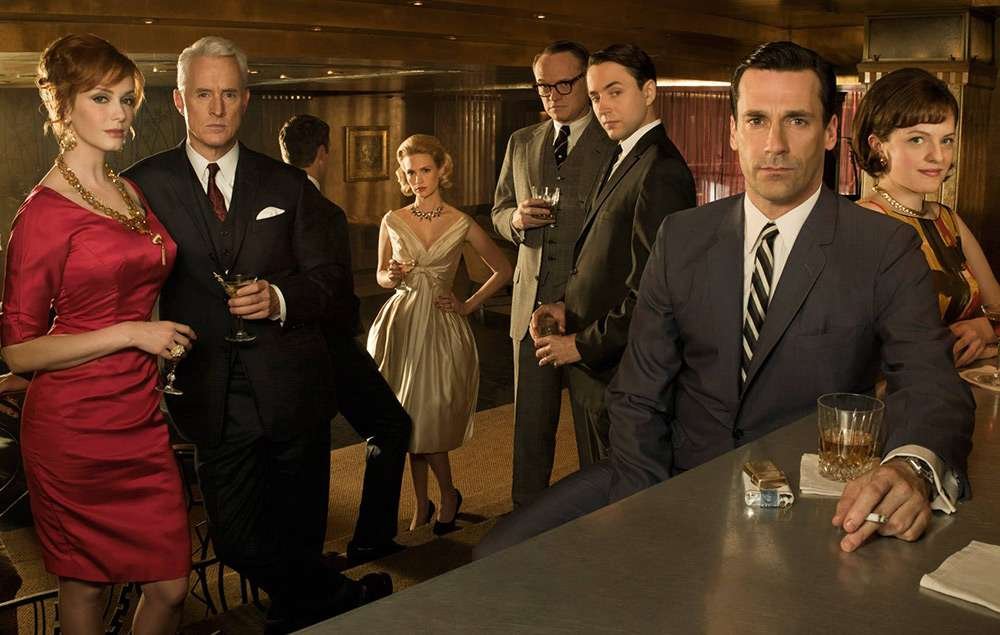
Men and women would often have a drink after work to unwind. To encourage women’s drinking, bartenders invented fruity and sweet cocktails such as the Grasshopper, Pink Squirrel, White Russian, and Sloe Gin Fizz. Sunday brunches also grew in popularity where Mimosas and Bloody Marys would be served.
The traditional 1950s cocktails that would most likely to be served for a cocktail party would include: Martini-gin or vodka, Manhattan, Old Fashioned, Tom Collins, Whisky Sour, Stinger, Mojito, Mint Julep, and Sidecar. Specialty drinks that require additional ingredients include: Daiquiri, Margarita, Bloody Mary, and Pina Colada.
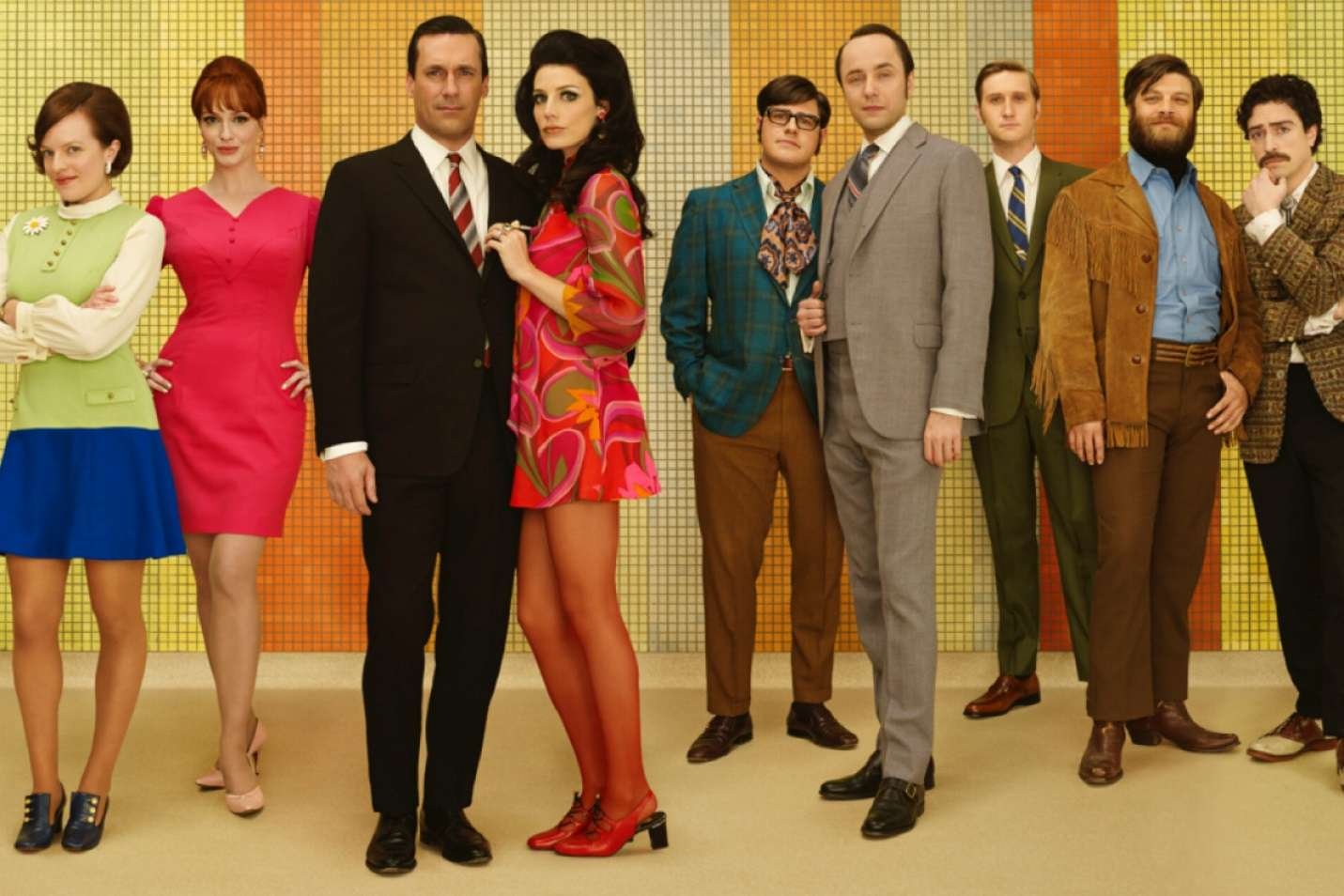
Manhattan
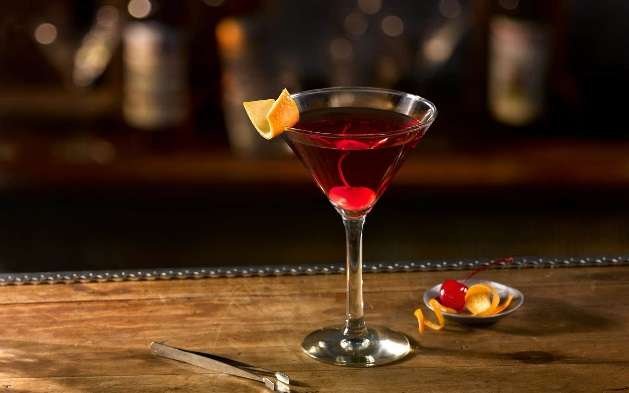
A well known fashionable drink which is rich with strong flavors. Manhattans originated in the 1870s in New York. Popular with the Sinatra Rat Pack and on the Mad Men TV show.
Cocktail Recipe:
2 parts rye whisky or bourbon or Canadian whisky
1 part sweet red vermouth
1 dash Angostura bitters
Mix with ice, stir and strain into a chilled martini glass.
Garnish with a cocktail cherry.
Vodka Martini
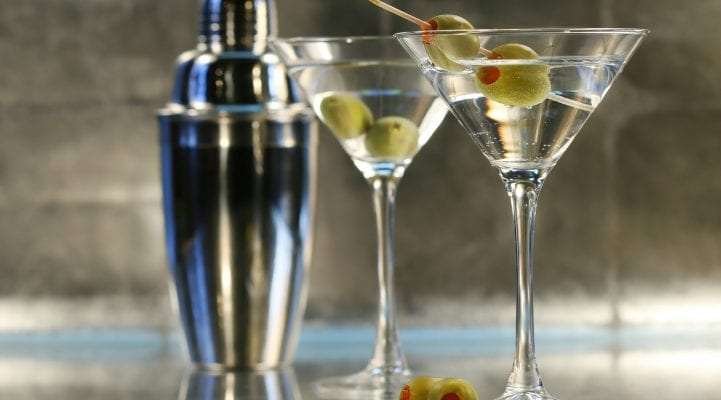
The best known and widely popular cocktail that can be made with gin or vodka. Martinis originated in the 1860s. In the 1940s the vodka to vermouth ratio was 4 to 1, by the 1950s it was 6 to 1. The vodka martini was popularized in James Bond films and was a regular drink on the Mad Men TV show as Roger Sterling’s favorite drink.
Cocktail Recipe:
6 parts gin (or old traditional 4 parts)
1 part dry vermouth
Mix in a shaker with ice, strain into a chilled martini glass.
Garnish with lemon peel oil and olives.
A vodka martini is the same but uses vodka instead of gin.
Old Fashioned
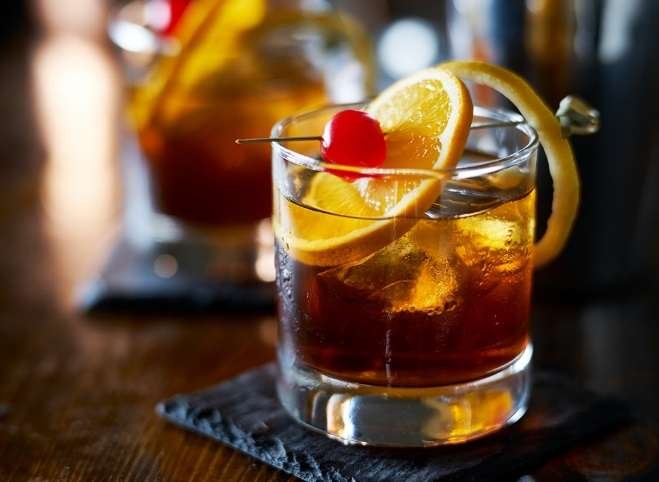
An iconic cocktail that originated in the 1830s. Making a proper old fashioned is considered an art form. This is the Don Draper cocktail of choice on Mad Men.
Cocktail Recipe:
2 parts bourbon or rye whiskey
1 sugar cube
few dashes Angostura bitters
few dashes of water
Muddle sugar, bitters, and water in an old fashioned glass. Fill with ice and whisky, stir.
Garnish with an orange slice and a cocktail cherry.
Tom Collins
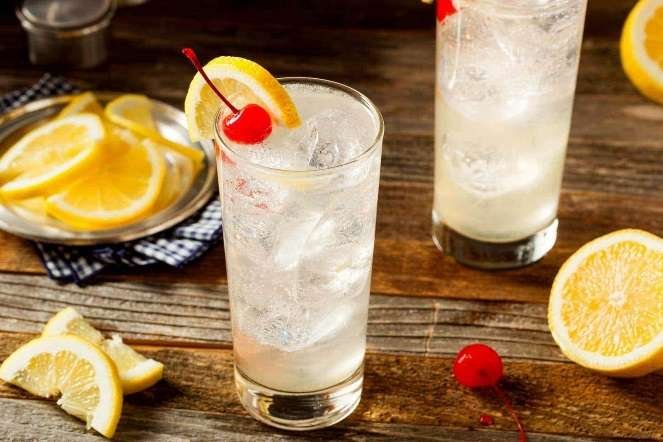
The Tom Collins grew in popularity in the U.S., England, France, and Germany in the 1880s
Cocktail Recipe:
3 parts gin
2 parts lemon juice
1 part sugar syrup
4 parts soda water
Mix in a Tom Collins glass with ice.
Garnish with a lemon slice and a cocktail cherry.
Vodka Gimlet

Betty Draper’s drink on the show.
Cocktail Recipe:
2 parts vodka
1 part lime juice
1/2 part simple syrup
Put in a shaker with ice and strain into martini glass.
Garnish with a slice of lime.
Bloody Mary
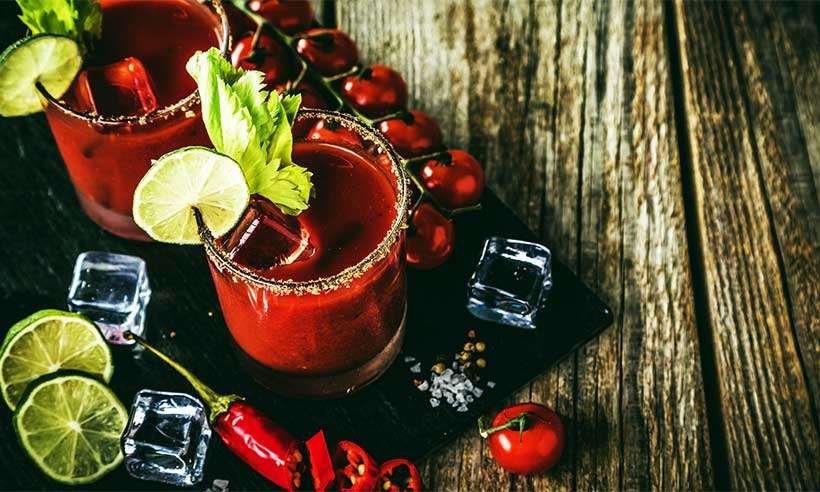
Invented in the 1920s in either New York or Paris. Popular as a reputed drink for hangovers and served at Sunday brunches. Favorite of Joan Holloway on the show.
Cocktail Recipe:
3 parts vodka
6 parts tomato juice
2 to 3 dashes of Worcestershire sauce
Add Tabasco, celery salt, black pepper, and horseradish to taste.
Stir, pour over ice into a highball glass.
Garnish with a celery stalk and a lemon or lime wedge or slice.
Whisky Sour
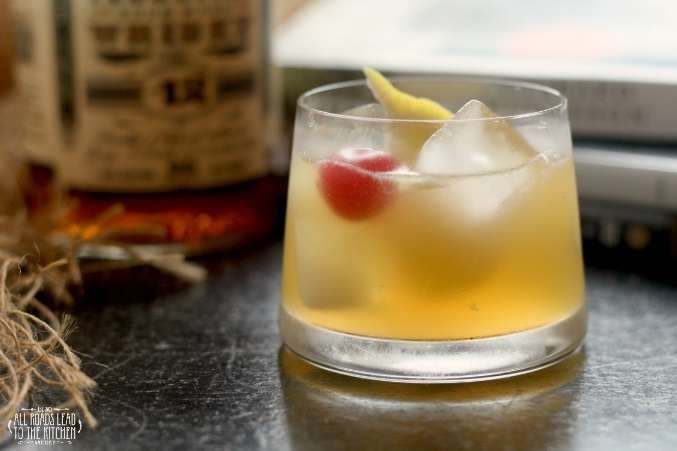
Originates in the 1870s and was popular in North and South America.
Cocktail Recipe:
3 parts bourbon
2 parts fresh lemon juice
1 part sugar syrup
Shake with ice, strain into an old fashioned glass.
Garnish with a lemon wedge.
Brandy Alexander
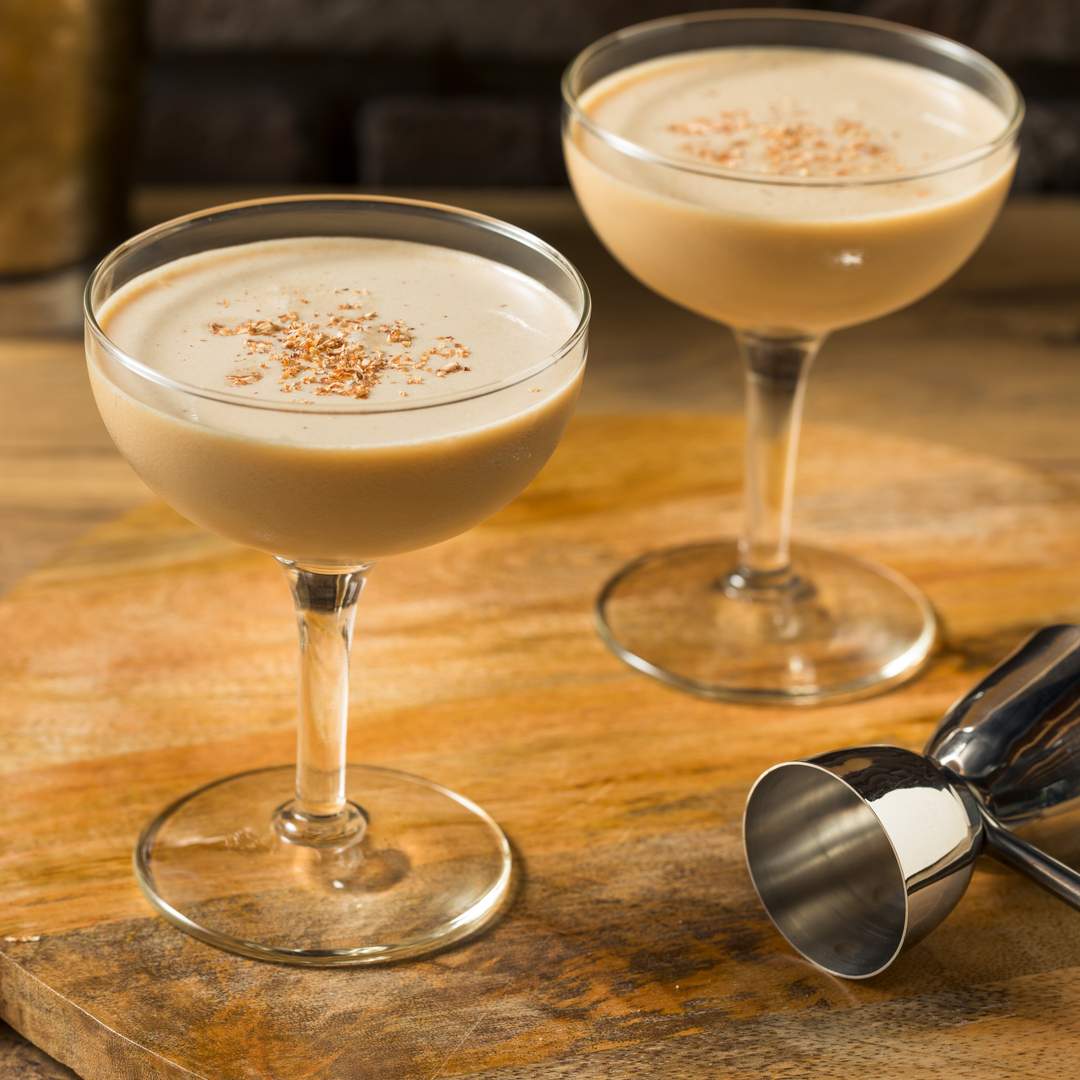
Created in the 1920s at a New York restaurant. Peggy Olson drank it on the show.
Cocktail Recipe:
1 part cognac
1 part Crème de cacao
1 part cream
Put in a shaker and strain into a chilled cocktail glass.
Garnish with nutmeg on top.
Side Car
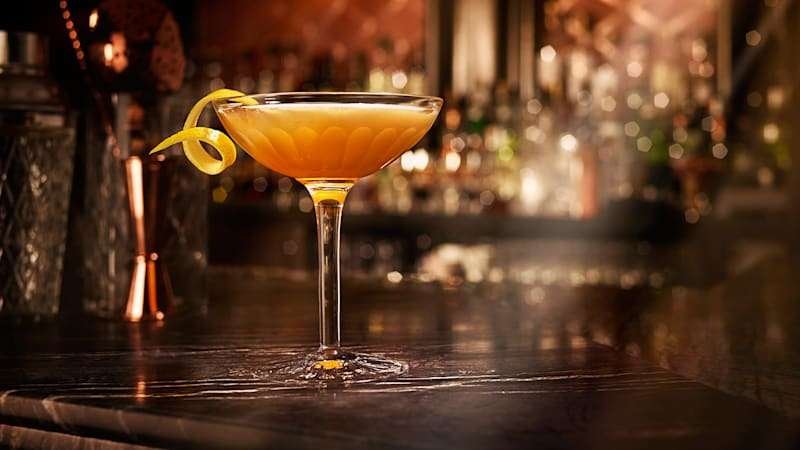
The side car developed in London and Paris after World War One. Often served with Oysters Rockefeller.
Cocktail Recipe:
2 parts cognac or brandy
1 part orange liqueur
1 fresh lemon juice
Shake with ice, strain into a chilled martini glass.
Garnish with a lemon peel strip.
White Russian
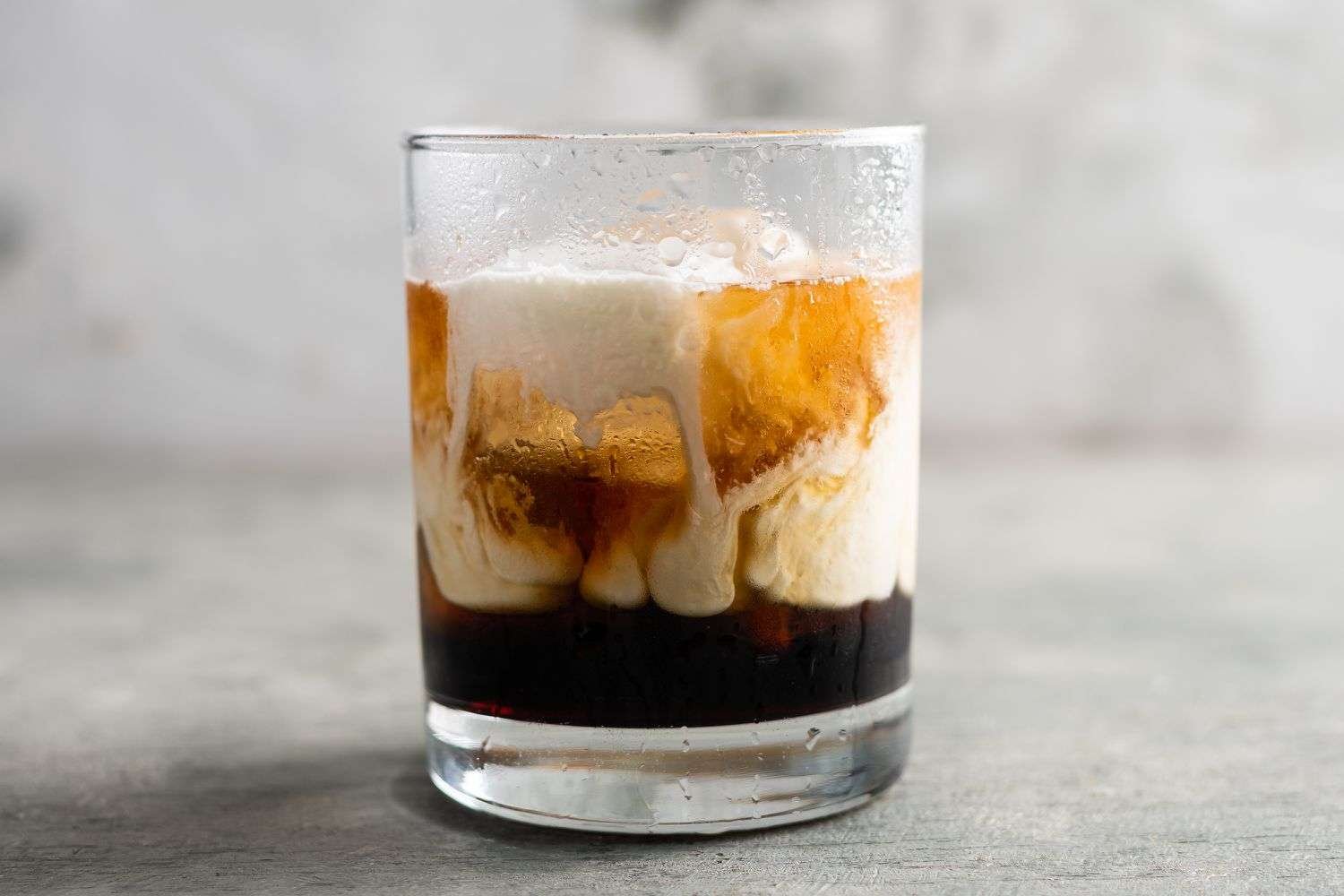
Created in 1949 in Brussels.
Cocktail Recipe:
5 parts vodka
2 parts coffee liqueur
3 parts cream
Serve with ice
Pour alcohol over the ice, then pour cream on top.



